The Plastic Garden
Sena Clara Creston, The Plastic Garden, Treefort, 2019, 12'x12'x8'
Sena Clara Creston, The Plastic Garden, 2018, 3'x3'x2'
Sena Clara Creston, The Plastic Garden, Borealis, 2018, 3'x3'x2'
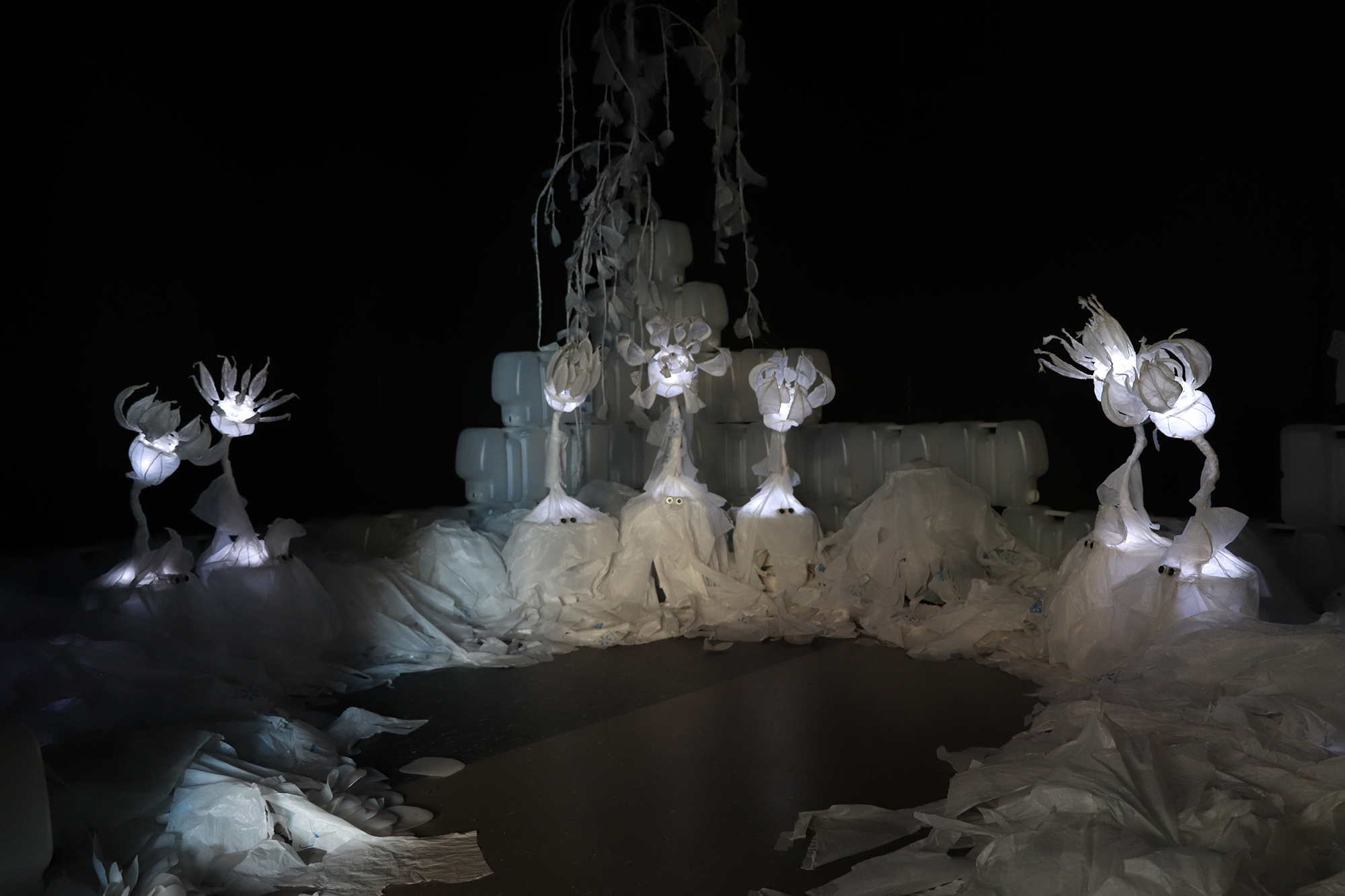
Sena Clara Creston, The Plastic Garden, Treefort, 2019, 12'x12'x8'
Sena Clara Creston, The Plastic Garden, Treefort, 2019, 12'x12'x8'
Sena Clara Creston, The Plastic Garden, Treefort, 2019, 1'x1'x2' each
Sena Clara Creston, The Plastic Garden, Treefort, 2019, 12'x12'x8'
Sena Clara Creston, The Plastic Garden, Treefort, 2019, 1'x1'x2' each
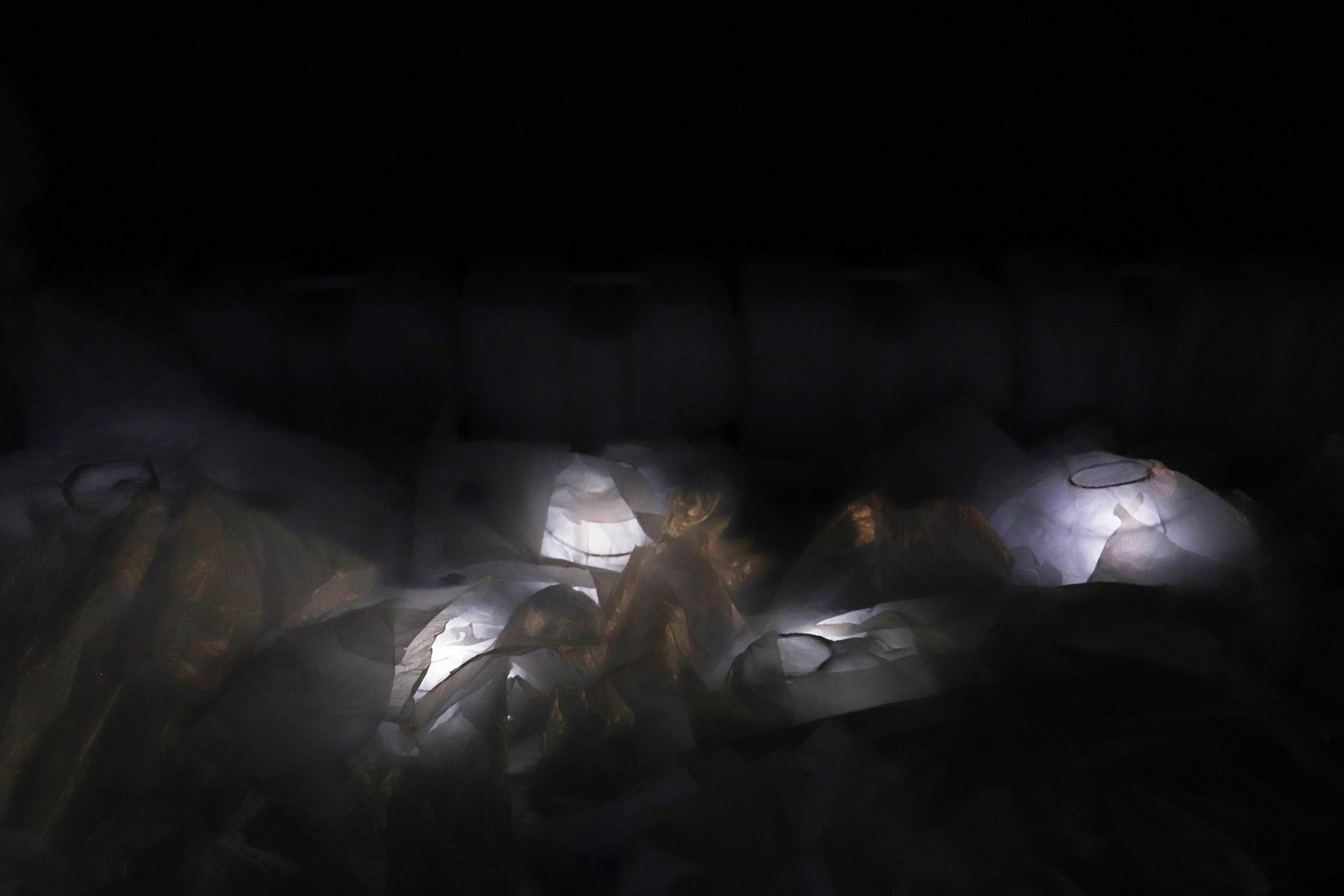
Sena Clara Creston, The Plastic Garden, Detail (Pods), Treefort2019, 1-2'x1-2'x1-2' each
Sena Clara Creston, The Plastic Garden, Treefort, 2019, 12'x12'x8'
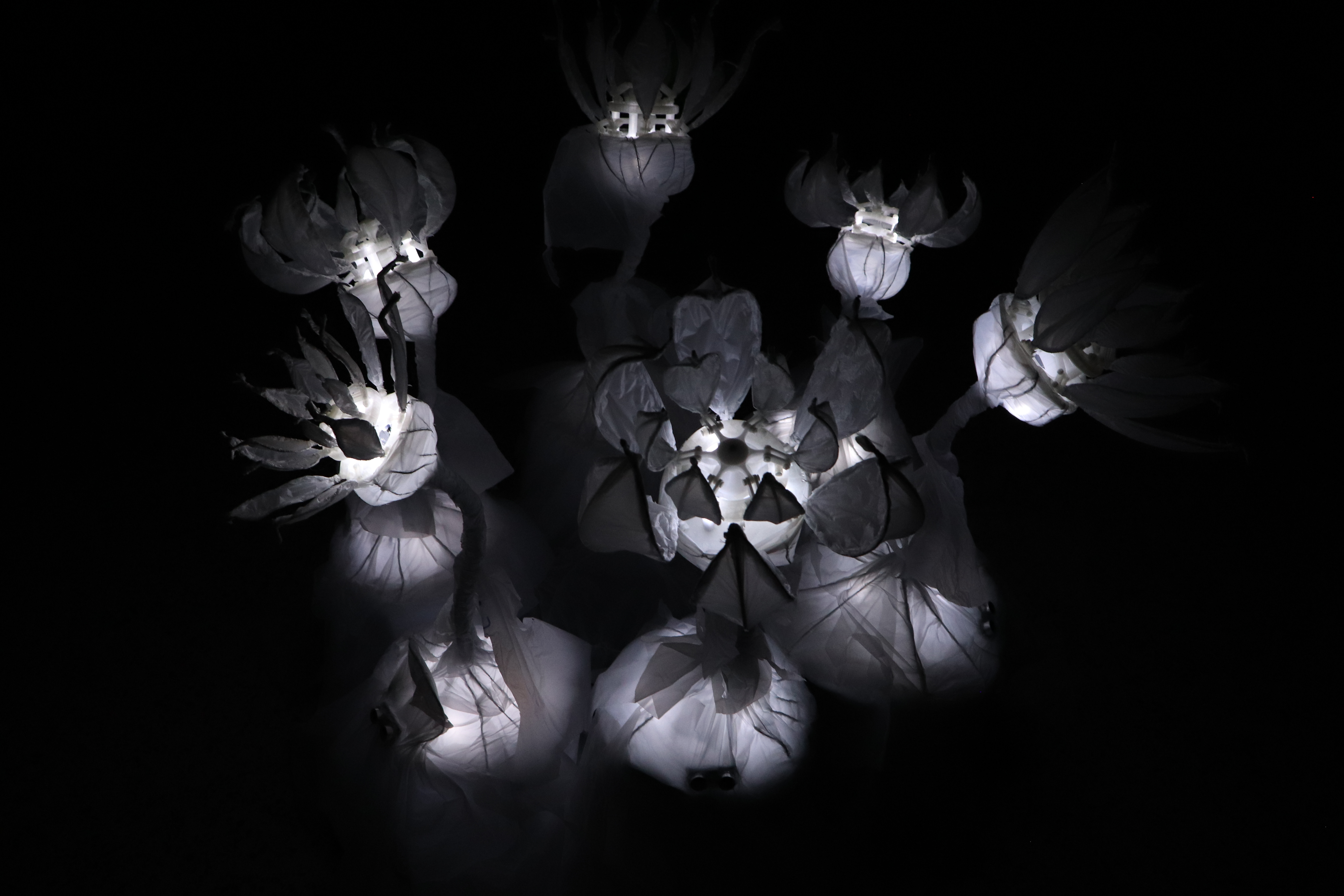
Sena Clara Creston, The Plastic Garden, 2018, 3'x3'x2'
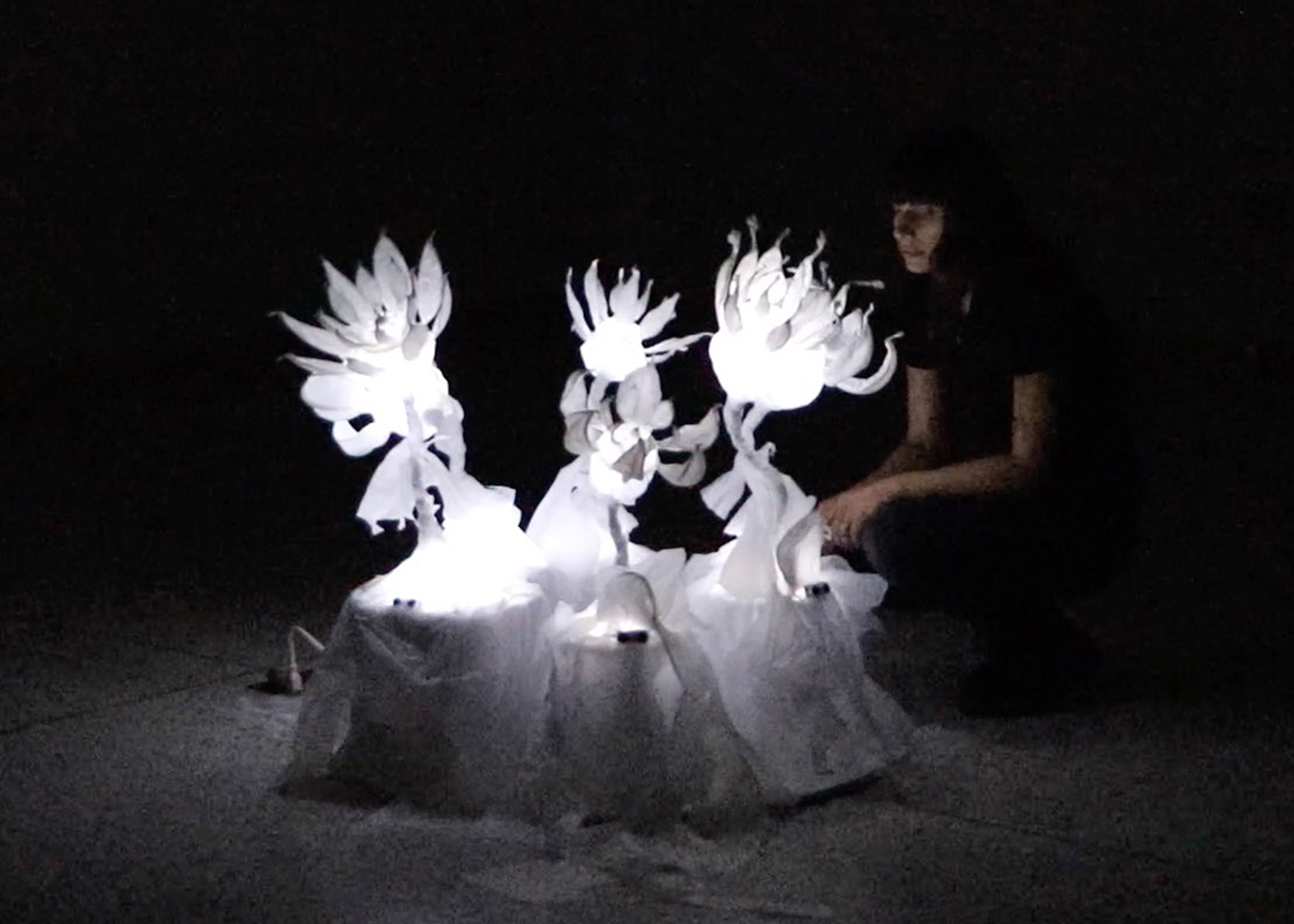
Sena Clara Creston, The Plastic Garden, 2018, 3'x3'x2'
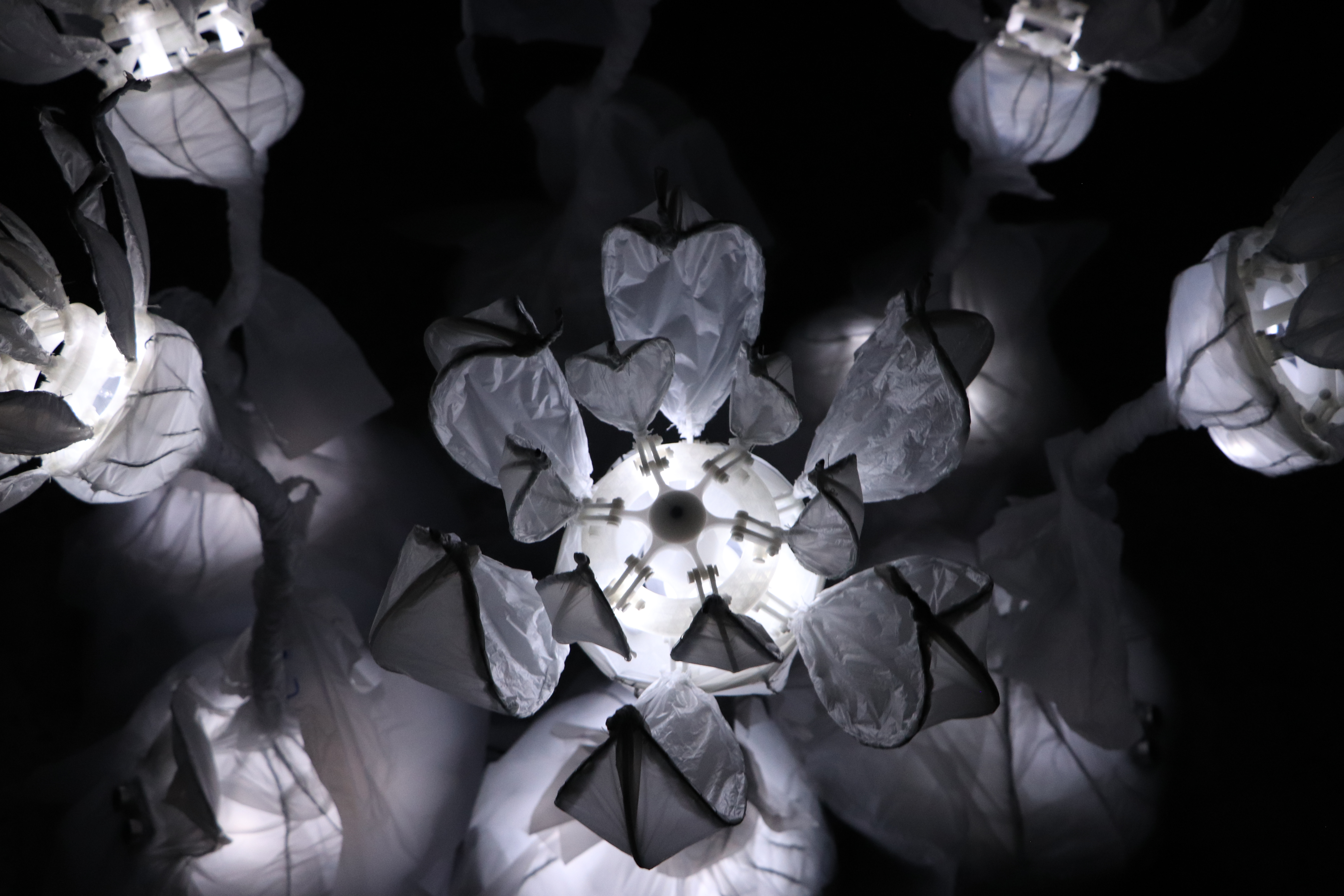
Sena Clara Creston, The Plastic Garden, Borealis, 2018, 1'x1'x2' each
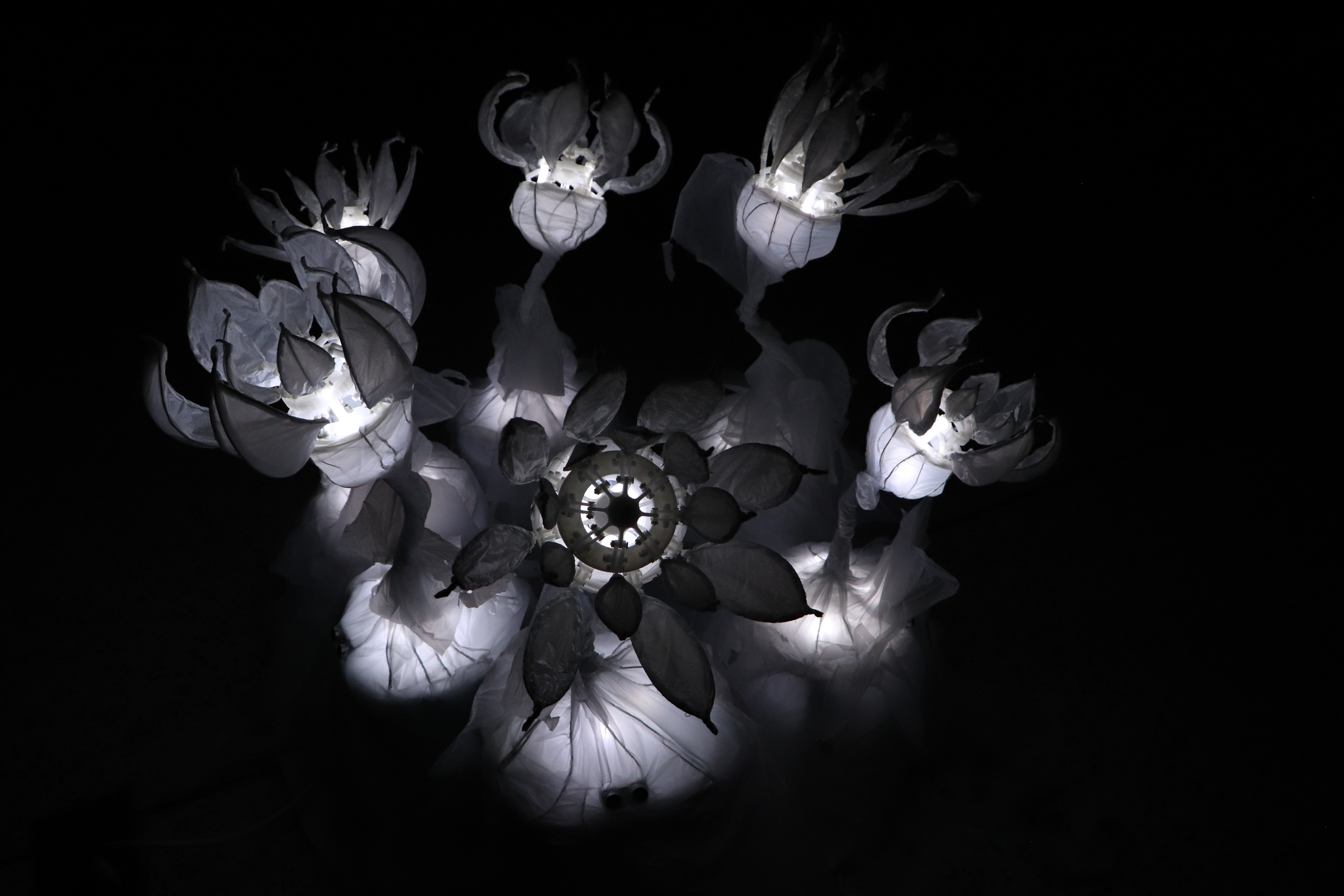
Sena Clara Creston, The Plastic Garden, Borealis, 2018, 3'x3'x2'
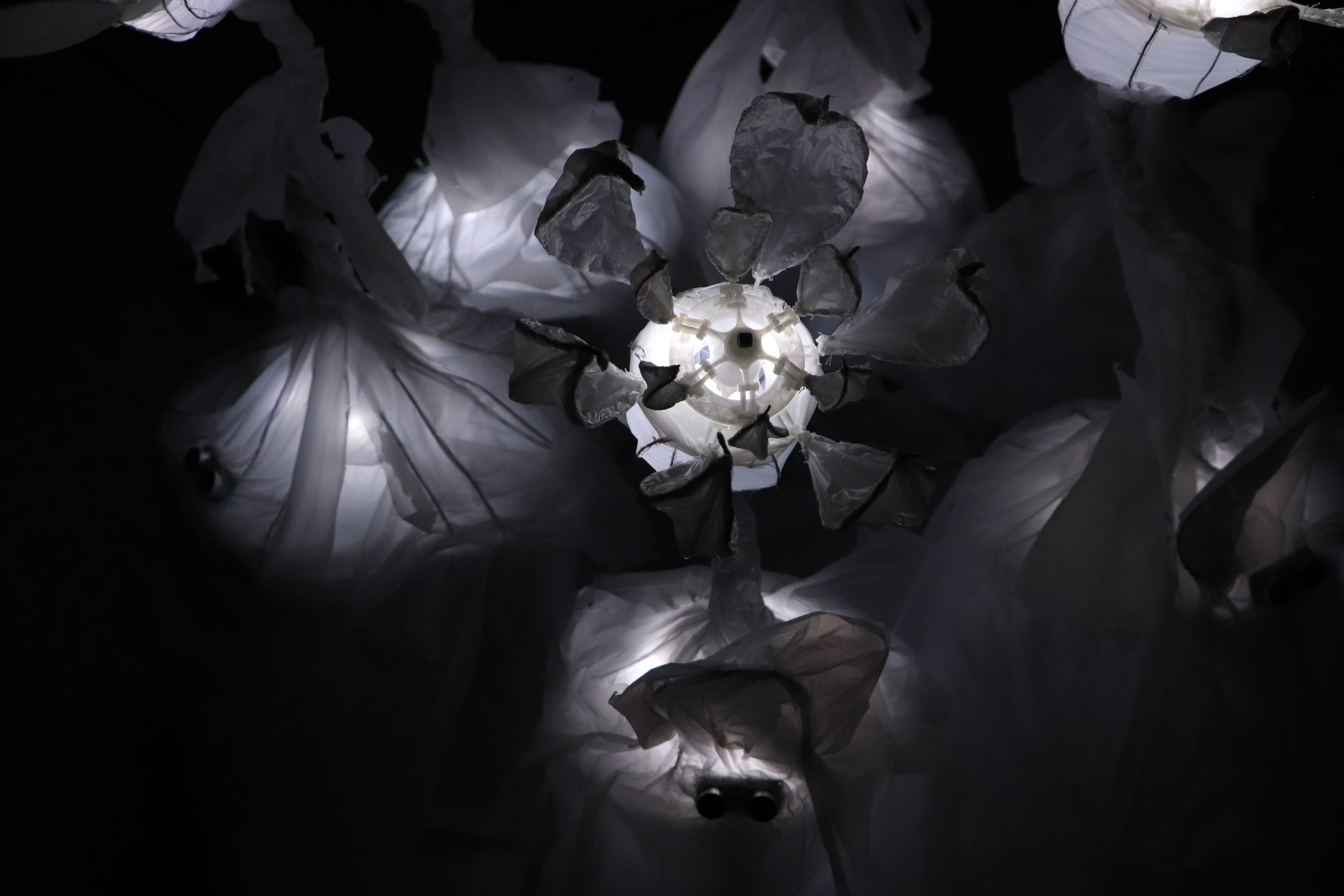
Sena Clara Creston, The Plastic Garden, Borealis, 2018, 1'x1'x2' each
The Plastic Garden is an illuminated interactive flower garden embedded with sensors, actuators and lights to detect and respond to the viewers’ movements. Animated to recall a slow, rhythmic breathing by opening and closing petals and softly pulsating light, the flowers harness the contemplative feeling people get while immersed in a dependable rhythmic environment. Once the viewer gets within range, robotic flowers transform, enclosing their petals within their leaves, shaking as if they were nervous. If the viewer continues to approach, the flowers respond by becoming aggressive, snapping their petals and leaves open and shut. Only when the viewer retreats will the flowers relax, open their leaves and expose their petals. The viewer in turn reacts to the flowers. They will either retreat apologetically or embrace confrontation with the skittish sculptures and approach them as a piece of art to be examined and understood. Animating my sculptures makes them seem alive, so how they are made should make sense within the imaginary world from which they come. I use poignant repurposed materials and obsolete technology to seduce my viewer into a familiar fantasy while illuminating social choices. Upon inspection, these flowers are built from discarded plastic water bottles and shopping bags, alluding to the human tendency to transform, and ultimately destroy nature with progress. Our actions have profound affect on the world around us, but often go unnoticed for better and for worse. The Plastic Garden is a transformative environment that through action and reaction, material and allusion and fantasy and reality, ask the viewer to question their actions in the past, present and future. Engineering Support was provided by students from the Robotics Club at Washington State University.